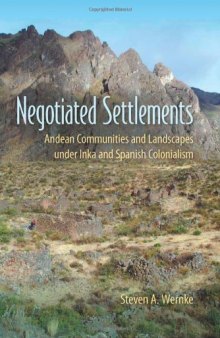 جزییات کتاب
جزییات کتاب
“A refreshing and long-overdue perspective in historical archaeology that has the potential to provide new insights into the ways in which colonial relations were played out not just in the Colca Valley but elsewhere as well. This is a groundbreaking book that will inspire historical archaeologists to systematically examine the broader social and natural landscapes in which individual sites are located.”—Mary L. Van Buren, Colorado State University This interdisciplinary combination of archaeological, historical, and ethnographic research reveals how the Andean people of southern Peru’s Colca Valley experienced and responded to successive waves of colonial rule by the Inka and Spanish empires from the fifteenth through seventeenth centuries. While most research splits the prehispanic and post-conquest eras into separate domains of study, Steven Wernke’s perspective explicitly bridges the periods before and after the Spanish conquest of the Andes. He integrates GIS-based spatial analyses of settlement patterning, land use, and layout with documentary-based reconstruction of land-tenure patterns. He also tracks the negotiation of urban space and religious practice at the earliest Franciscan mission settlement excavated in the highland Andes to date. Wernke’s findings show how Spanish ideals of urban order penetrated this rural provincial setting as early as the first generation after the conquest yet also reveal how Andean communities had long been actively incorporating foreigners’ ideals and practices to make them their own. At ease whether examining religious practice at early Franciscan mission settlements or reconstructing prehispanic Andean land use, Wernke contributes to current debates on colonial and postcolonial theory, historical anthropology, and the growing field of colonial archaeology. He argues that we should avoid thinking of relations within the Inka and Spanish states as a dichotomy between colonizers and colonized; instead, he explains how new kinds of communities and landscapes were co-produced at the local level.



 دانلود کتاب
دانلود کتاب

 جزییات کتاب
جزییات کتاب


 این کتاب رو مطالعه کردید؟ نظر شما چیست؟
این کتاب رو مطالعه کردید؟ نظر شما چیست؟
